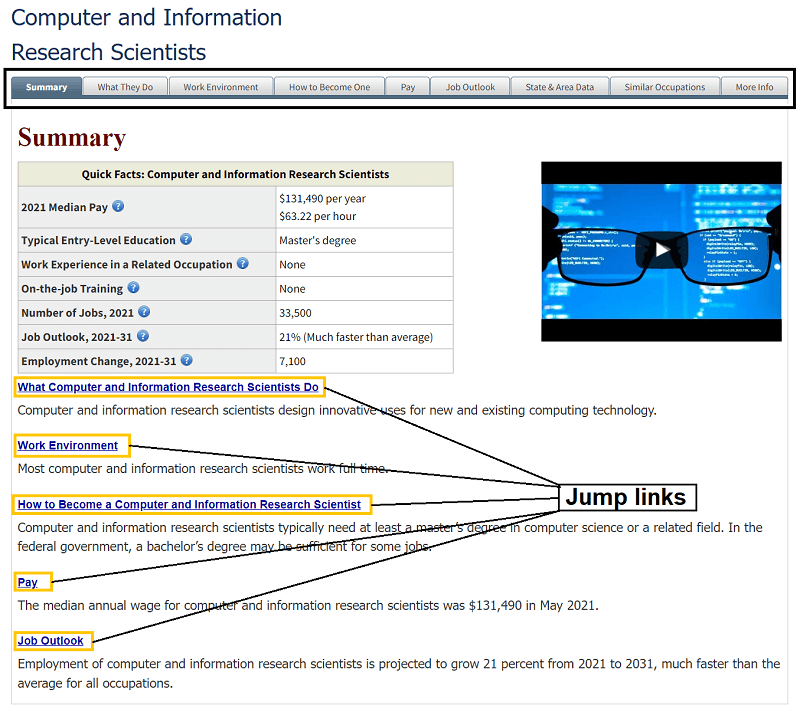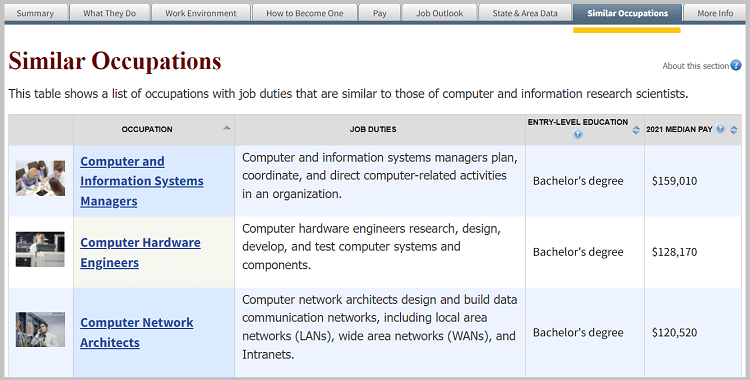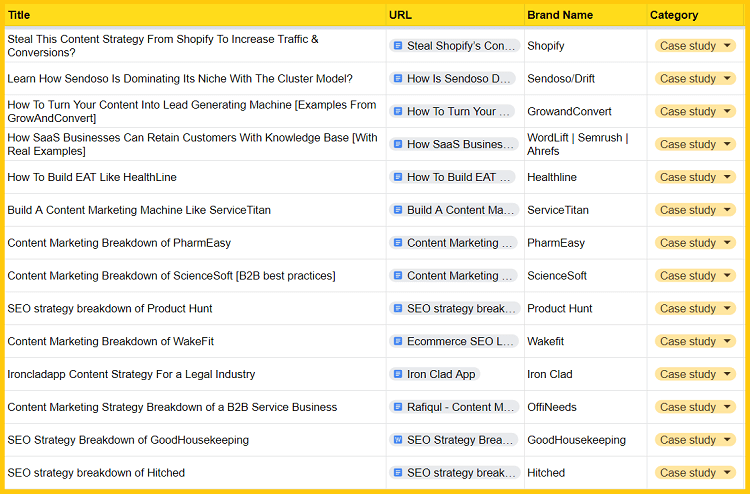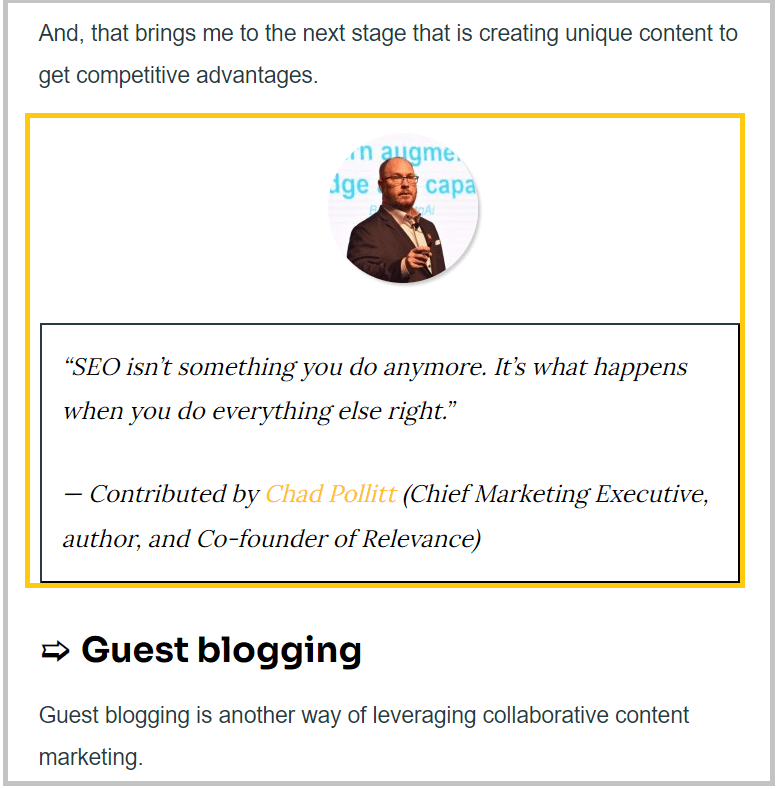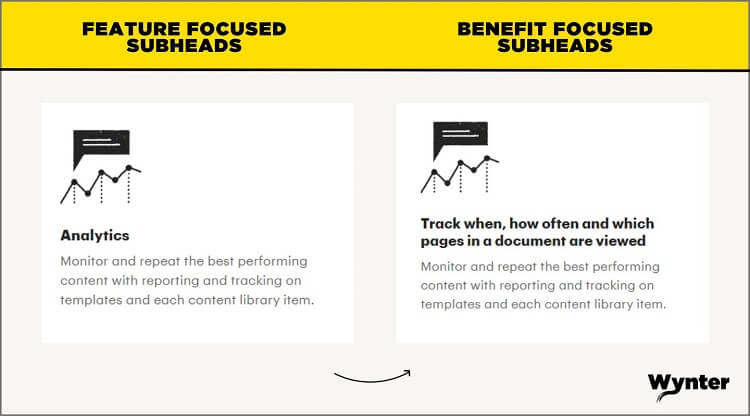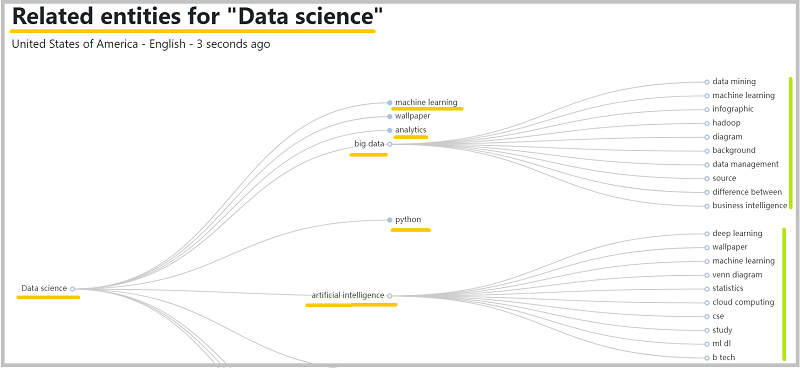#096 Content Marketing VIP Newsletter
SEO case study of driving 2M+ organic traffic with content hubs.
🎯 Actionable insights
💡 1. Understanding content hubs of the U.S. Bureau of Labor Statistics
One of the key SEO drivers of the U.S. Bureau of Labor Statistics (www.bls. gov) is the content hub for career opportunities.
Key stats of BLS’s career outlook subfolder:
Driving more than 2M organic visits every month
More than 4,500 pages published
Generated 1.7M backlinks from 66k different domains
Let’s dive into the content hub structure:
Each parent page for a career profile follows the same structure, which includes sub-topics like:
Summary
What They Do
Work Environment
How to Become One
Pay
Job Outlook
State & Area
Similar Occupations
Here’s a screenshot:
If you have experience in the career guide industry, you’ll understand that these sub-topics are helpful for:
Improved user experience
Ranking on common keyword types
Here are some common keywords in the career guide niche (with an example):
What does a computer research scientist do?
How to become a computer research scientist?
Computer research scientist salary
Career scope of computer research scientist
What makes this content hub style unique and valuable?
Visit any content hub page for a career guide, and you’ll see that the entire guide is divided into these sub-topics.
This navigation system helps readers quickly pull out the important information from the page (low time-to-value).
The content hub is also focused on improving the internal links.
The page's ‘similar occupations’ section lists all related career opportunities via internal links.
Note: One thing I’d like to change in the above content hub structure is that instead of having all sub-topics under one URL, I will create a dedicated page URL and group them together.
This will help to rank for more long-tail keywords with sub-topics.
Action items:
Plan your content hub structure by grouping relevant topics.
For example, a travel site may create a content hub by location by adding relevant sub-topics:
Best places to visit in X
When to visit X
Things to do in X, etc.
If you already have dozens of guides on similar topics, think of grouping them and build a content hub. Take Moz’s SEO guide, for example.
Internal links are the backbone of a content hub. Ensure that all these sub-topics are interlinked with descriptive link text.
👉 Access SEO case studies of top-performing sites is the cont
⭐ Unlock SEO breakdowns of high-performing sites in search
When you join the Content Marketing VIP club, you'll unlock 30+ resources on:
SEO case studies
In-depth guides (EAT, Blog UX, Content briefs, etc.)
SEO audit
Frameworks and SOPs
You’ll also get access to new content going forward.
This should be expensive, right?
The content marketing VIP club has a yearly membership option which costs you only $27 annually. That means you'll spend around only ₹6 per day to reach the top category of SEOs. Now, the choice is yours 👇
If you're unsure whether this is right for you? DM over LinkedIn, and I'll help you decide (Don't worry, I'll never try to convince you to buy)
👉 Join Content Marketing VIP Club membership
💬 Bite-sized insights
💡 1. Use this strategy to improve the E EAT information of a new website
Here is an SEO tip I use for many new websites to improve the EEAT information:
Step 1. Reach out to industry experts and ask for contributor quotes for an article Even better if Google also considers the person as an expert.
To know this type '[your niche] experts' in Google and see profiles suggested by Google as related searches. e.g., SEO experts.
Step 2. Once they share a contributor quote, add it to your blog post (preferred with a headshot of the contributor and a link back to the URL.
An example:
Step 3. Use contributor schema type in your blog post.
This will tell search engines that expert X has contributed to the content of this page.
How this helps:
This way, Google can associate your brand entity with industry experts and build trust. See the image to understand the implementation of this schema:
Feel free to customize this schema type for your site: Contributor schema type.
👉 Insight from Sk Rafiqul Islam (creator of Content Marketing VIP)
💡 2. Use benefit-focused headlines to bring clarity to your landing page (insight from Wynter)
“People read only headlines and subheads.
This means you must communicate all the vital information in these. Using feature-focused or product name-focused headlines is pointless.
It doesn't carry any valuable information. It wastes the reader's time. And you lose your opportunity. Instead, go with the benefit-focused subheads and headlines.
Say clearly and simply what are the benefits/outcomes they get from using this product/feature.
Don’t hide it in the paragraphs. It won't be seen.”
— Insight from Wynter (B2B message testing platform)
Here’s an example:
🗓️ Free resources/ tools
💡 1. Find related entities to implement entity-based SEO (free tool)
Topically helps you identify dozens of entities related to your topic and use them to create content networks that rank.
Here’s a screenshot:
Features (extracted from the site):
1. Visually explore the knowledge graph
Topically identifies dozens of entities and ontologies using Google's Knowledge Graph data.
Implement entity-based SEO
2. Identify relationships between entities, and get insights into how search engines interpret the content
3. Create content networks that rank
Find hundreds of related entities that can potentially improve the performance of your content.
👉 Try Topically to find related entities for free
💡 2. How to boost lead generation with SEO (free course)
Discover how to strategically find high-intent keywords to increase qualified traffic and improve conversion rates.
What you’ll learn in this free SEO course:
Module 1. The Do's and Don'ts of Lead-generating SEO
Discover why most content fails to generate leads and how to create an effective SEO strategy to attract leads at the bottom of the funnel.
Module 2. Problems with a traditional keyword research approach
Learn why traditional keyword research is flawed and how to target prospects with high buying intent.
Module 3. Pain point SEO
Discover Pain Point SEO and save time by effectively using this strategy for keyword research instead of chasing traffic.
Module 4. Implementing pain point SEO: SaaS industries
Discover how to use the Pain Point SEO framework using a hypothetical SaaS company as an example.
Module 5. Implementing pain point SEO: service industries
In this lesson, you’ll find another example of using the Pain Point SEO framework for a hypothetical service company.
👉 Enroll in the lead generation SEO course
[Sponsored]
Join a cohort-based digital marketing program
GrowthAcad is a great option for newbies in digital marketing due to its practical approach to learning. The program offers hands-on assignments, access to relevant tools, and a comprehensive curriculum covering a wide range of digital marketing topics.
Upon completion, students receive industry-recognized certifications and career support services.
With experienced and qualified instructors, GrowthAcad offers a supportive learning environment that prepares newbies for success in the digital marketing industry.
👉 Join GrowthAcad’s digital marketing training program
😄 Have Some Fun
“Content marketers who've heard of ChatGPT but haven't logged in once …”





